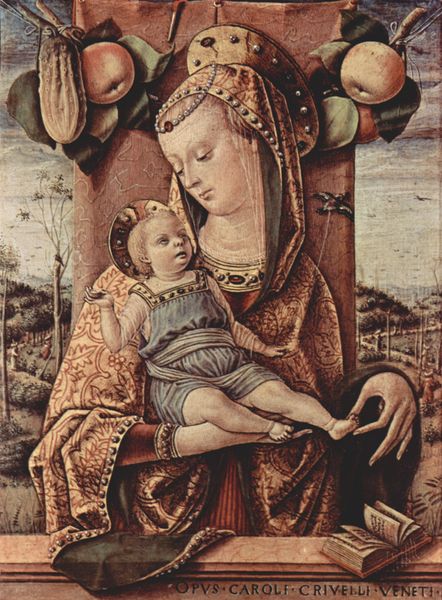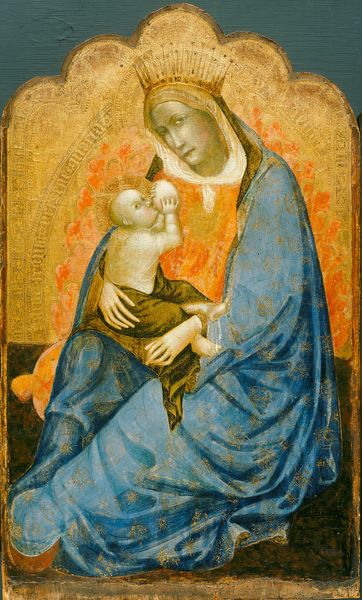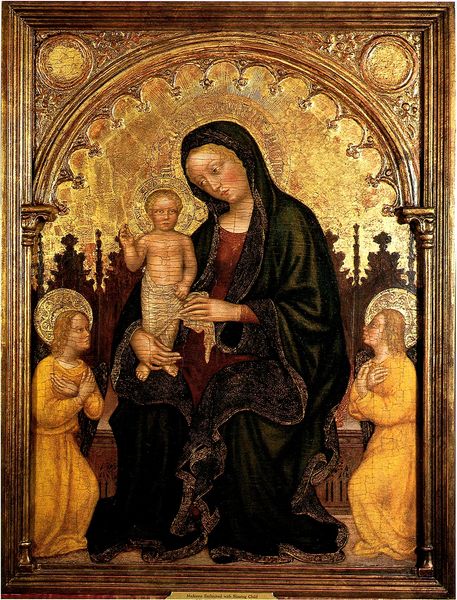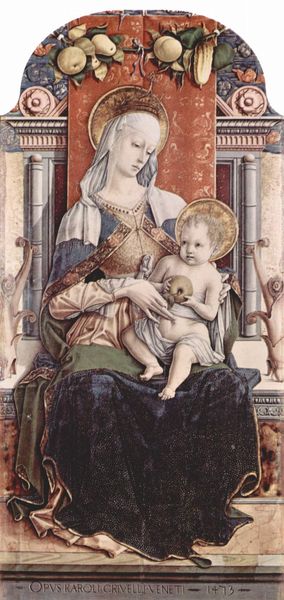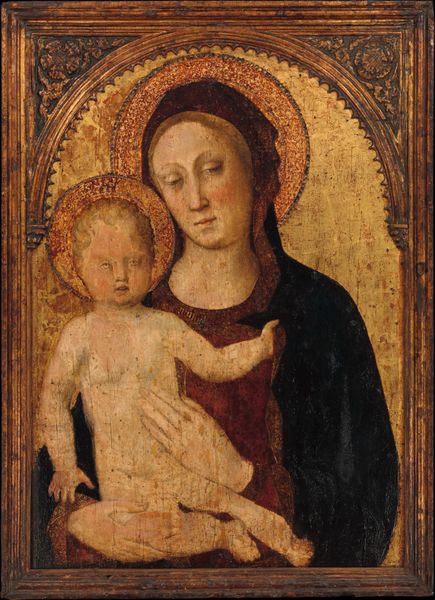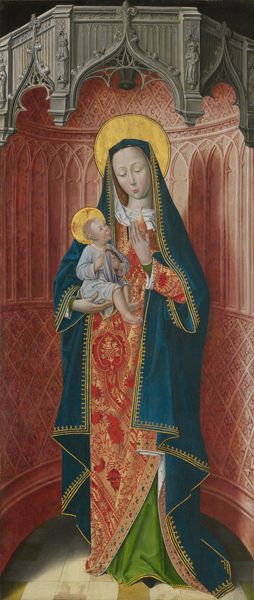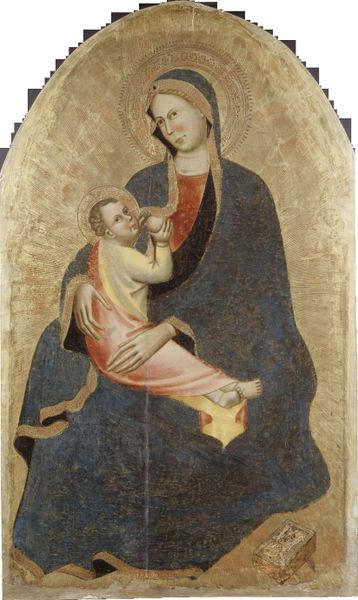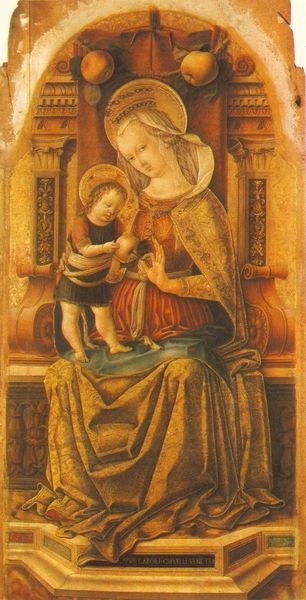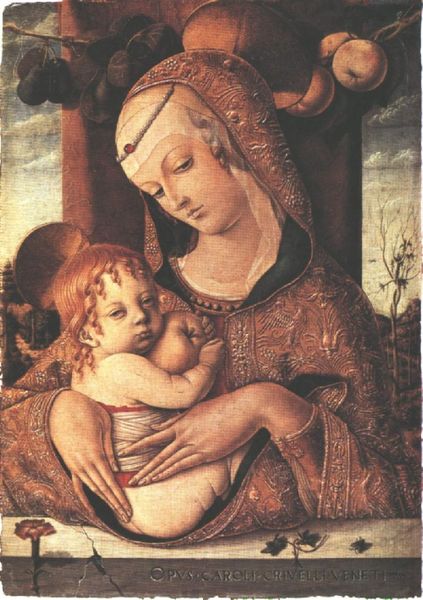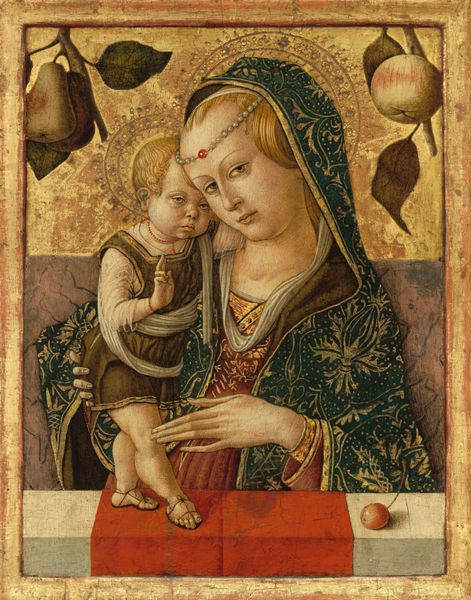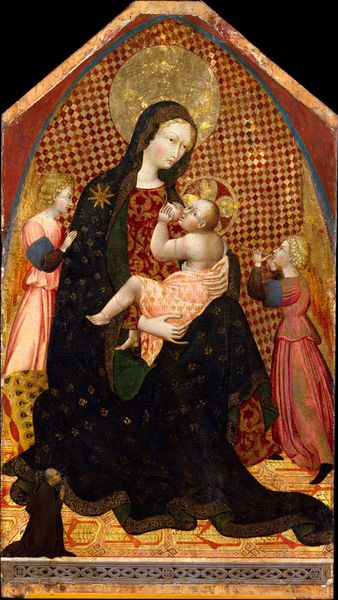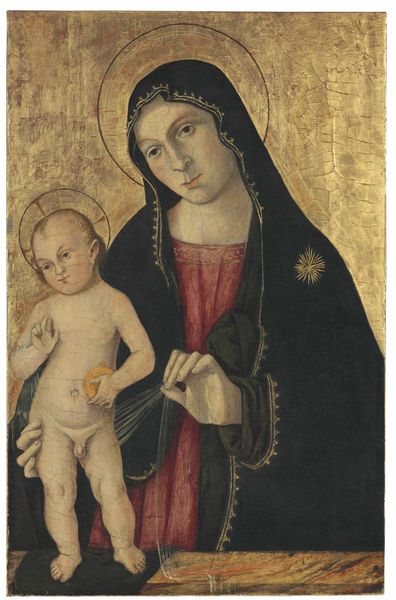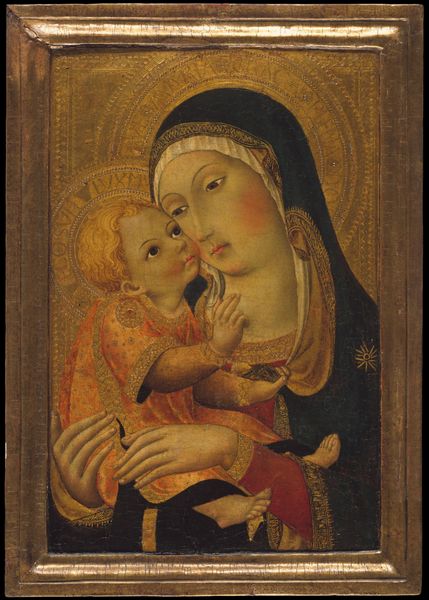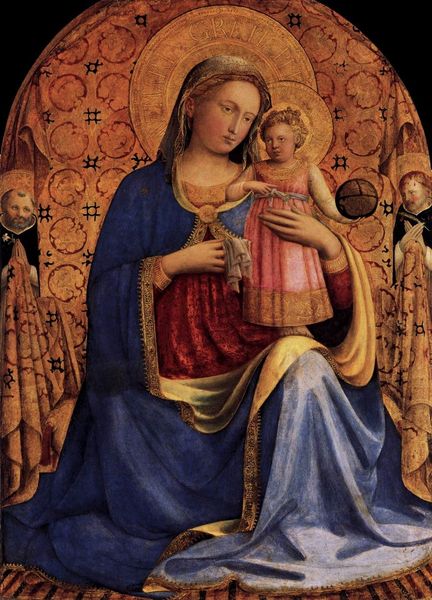
tempera, painting, oil-paint
#
tempera
#
painting
#
oil-paint
#
figuration
#
oil painting
#
christianity
#
history-painting
#
italian-renaissance
#
early-renaissance
#
virgin-mary
#
realism
#
christ
Dimensions: 119 x 73 cm
Copyright: Public domain
Editor: Here we have Gentile da Fabriano’s "Madonna with Child," created around 1427 using tempera and oil paint. There's a certain somber mood to it; the Madonna looks down with a slightly sorrowful expression. What stands out to you in this piece? Curator: This work, viewed through a modern lens, invites crucial dialogues. The Madonna, swathed in blue, and the child represent more than just religious figures. Consider the socioeconomic structures of the time. How does the Madonna’s veiled status reflect or challenge patriarchal norms? Is this simply an image of maternal love or a commentary on the limited roles afforded to women? Editor: That's a really interesting angle. I hadn't thought about the social implications so directly. Curator: Also, examine the use of gold leaf. While beautiful, it also symbolizes wealth and power, potentially revealing the Church's entanglement with secular authority. And what does it mean to portray divinity through earthly materials? Does this enhance or diminish their spiritual significance? Editor: So, it's about deconstructing the artwork to understand its relationship to power dynamics and societal norms? Curator: Precisely. Early Renaissance art often served as a tool for reinforcing existing hierarchies, even as it pioneered new artistic techniques. By questioning these established narratives, we can better understand the complex interplay between art, ideology, and social change. Does the pose communicate submission? And what is the viewer's gaze meant to elicit? Editor: I never really thought of art from this period being… subversive in any way. Curator: Perhaps not overtly. But by critically analyzing the symbolism and context, we uncover subtle yet potent commentaries on gender, class, and faith. Editor: Thanks, I’ll definitely look at early Renaissance paintings differently now. Curator: Indeed, art becomes a mirror reflecting the aspirations, tensions, and power struggles of its time. The Madonna may have a sad look also considering this point.
Comments
No comments
Be the first to comment and join the conversation on the ultimate creative platform.
